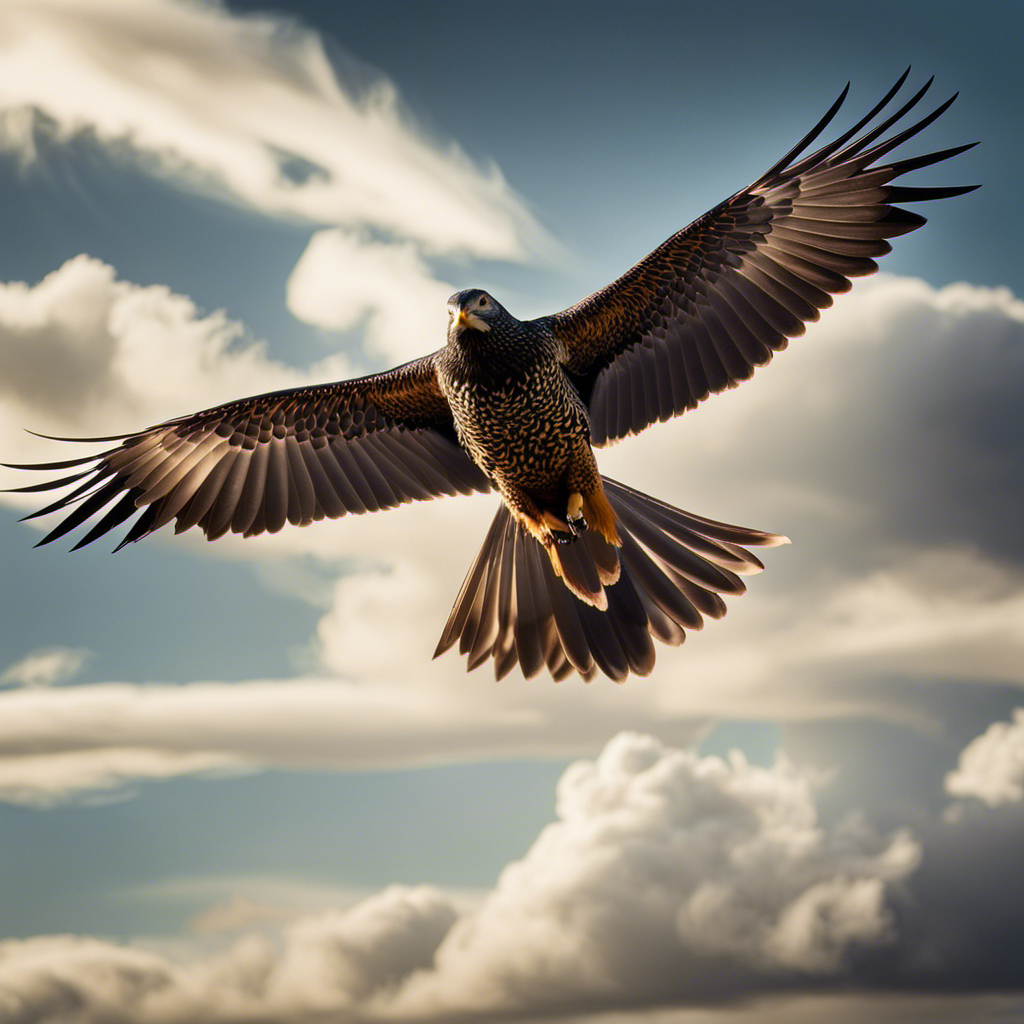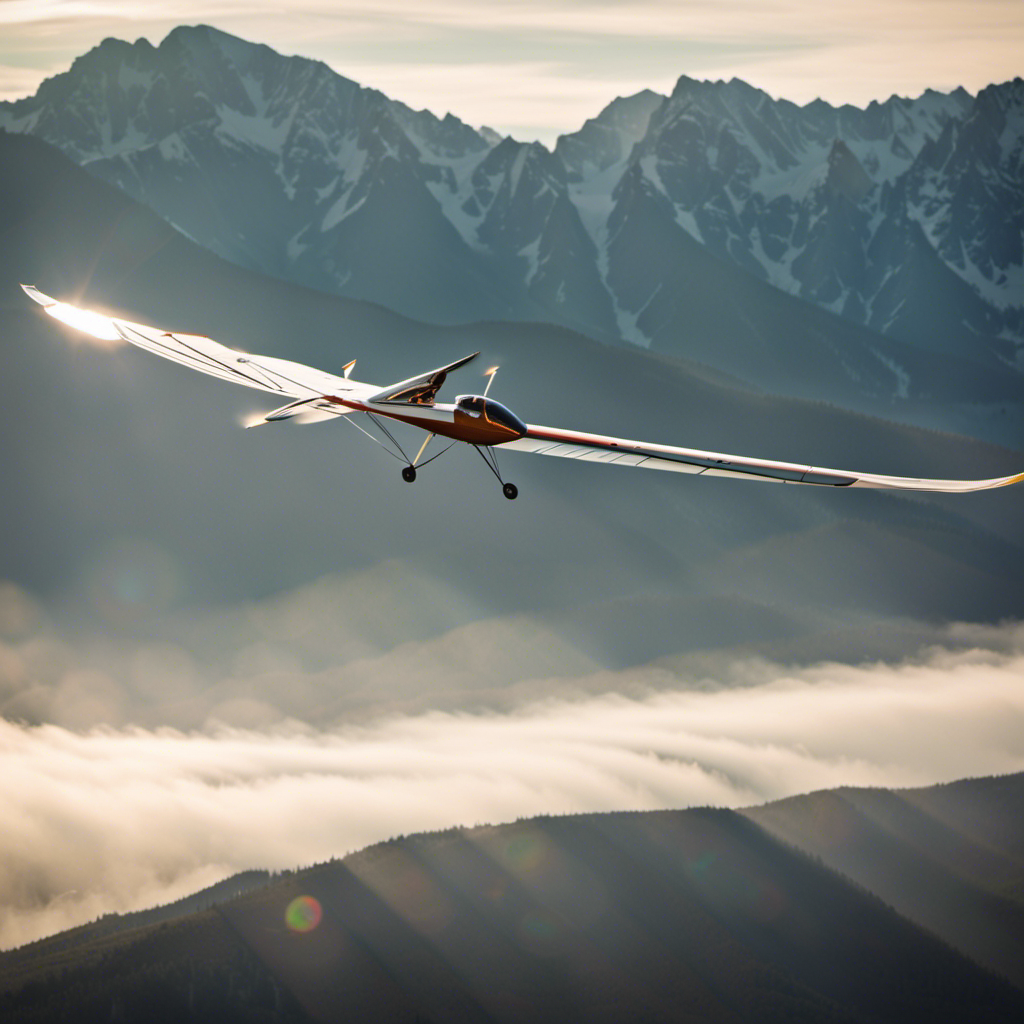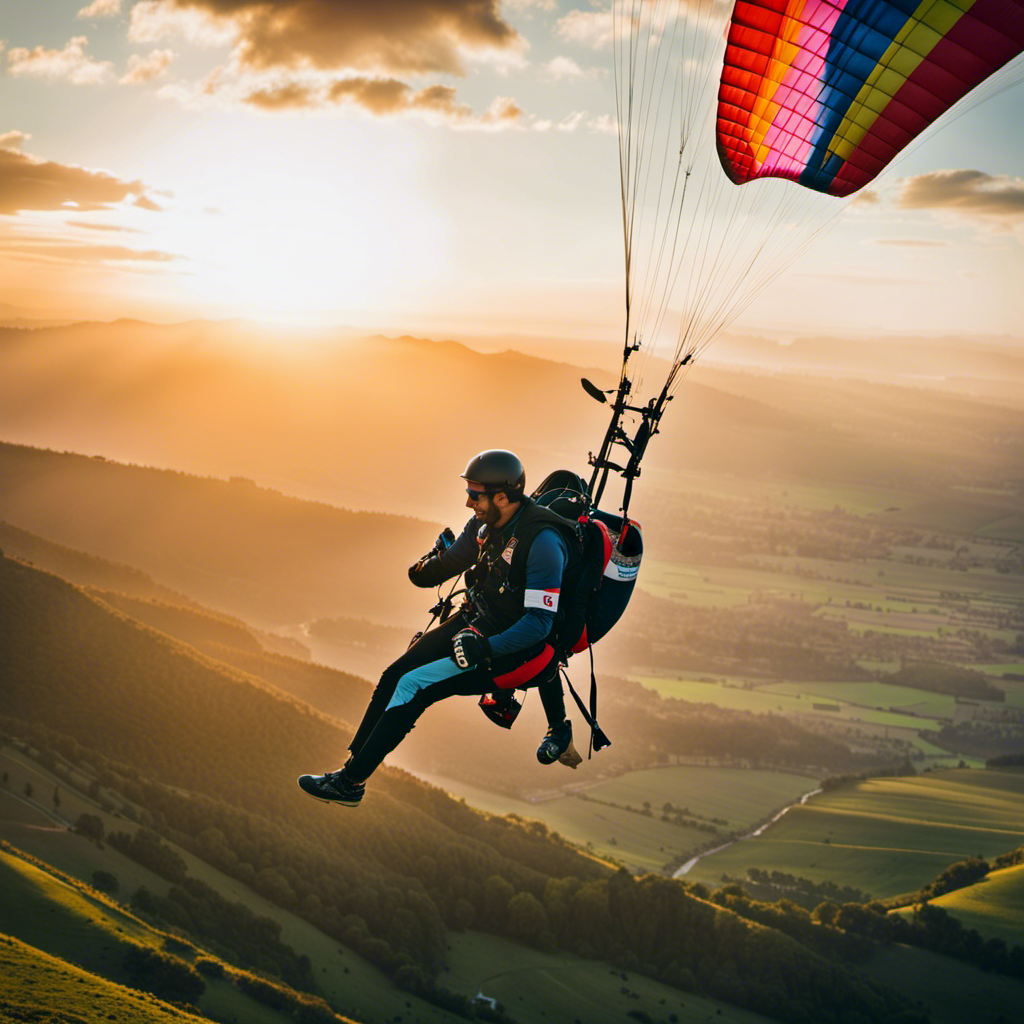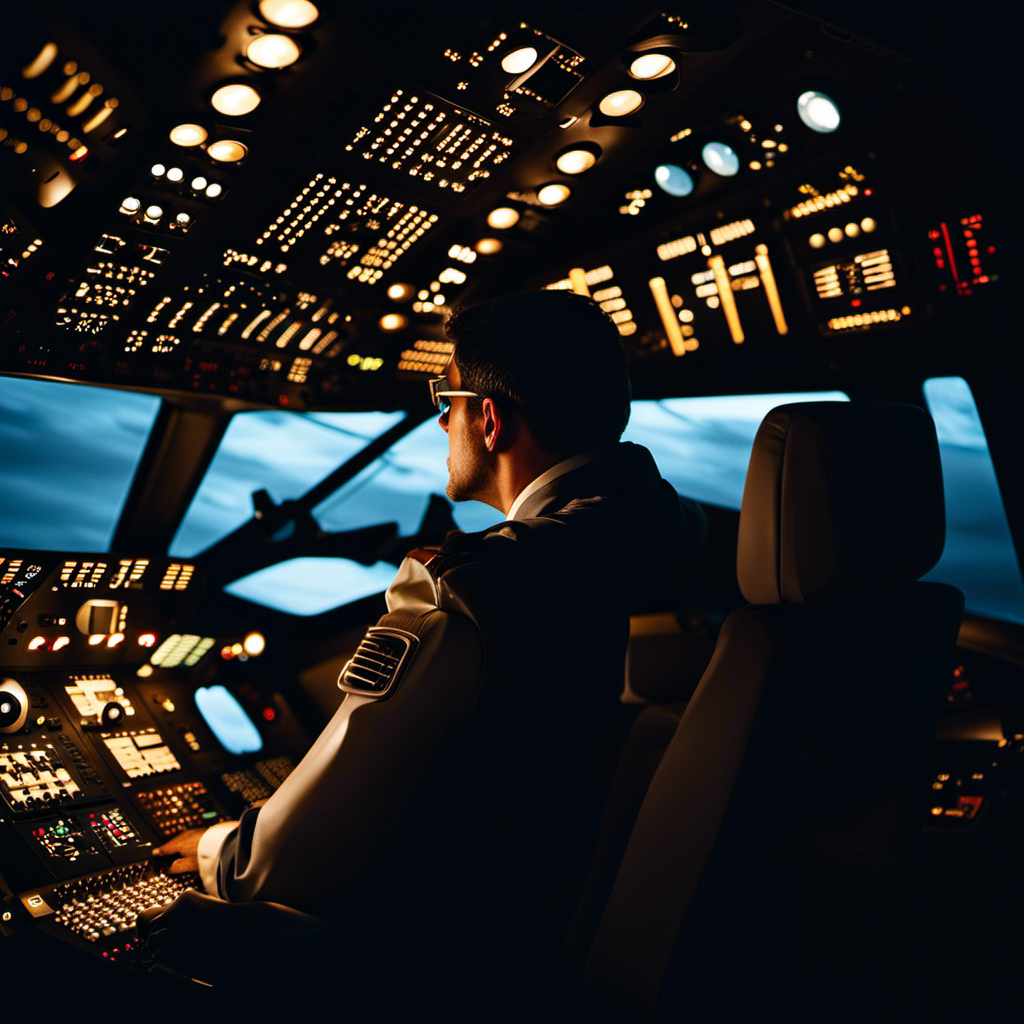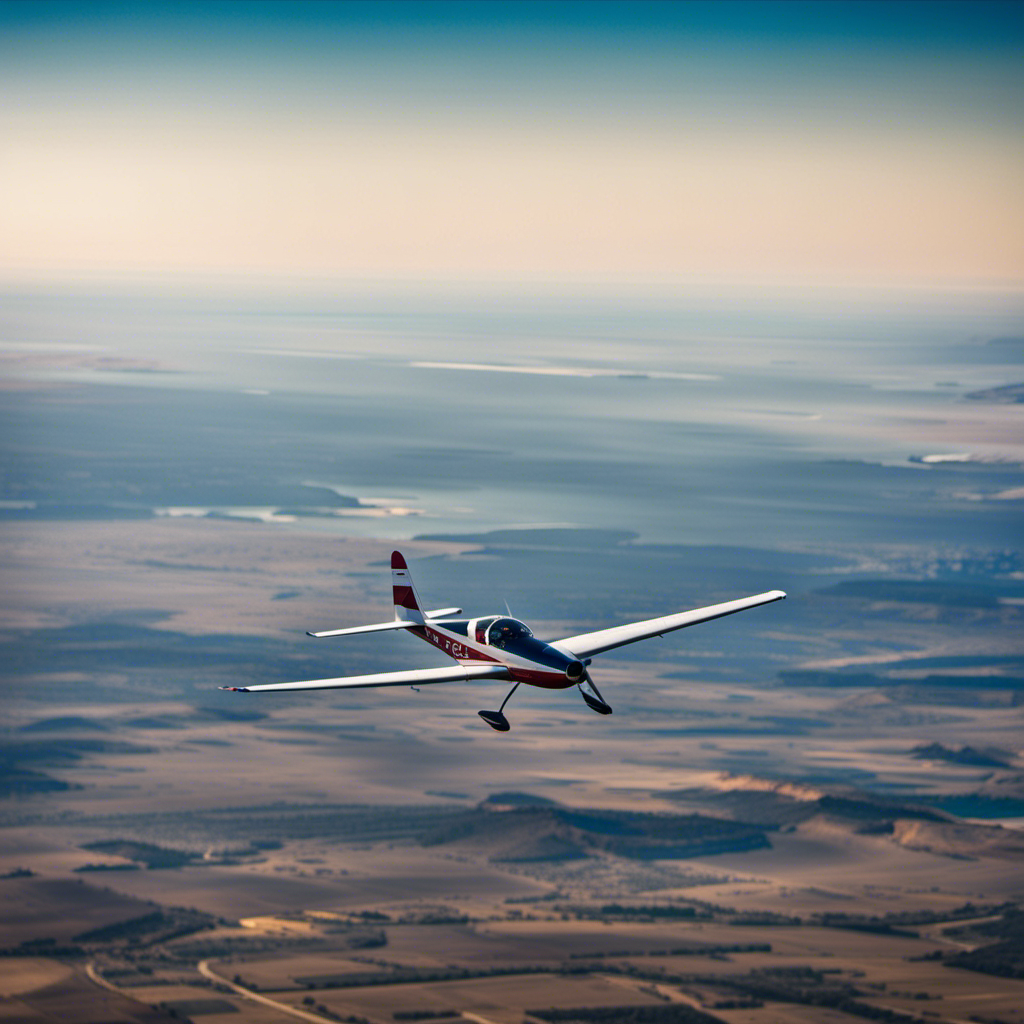As a glider pilot, I have always been fascinated by the concept of wing loading. It is a key factor that affects the effectiveness and safety of our flights.
So, what exactly is wing loading? Simply put, it’s the amount of weight that each square foot of wing area has to support. By understanding wing loading, we can optimize our glider’s performance and ensure a smooth and controlled flight.
In this article, we’ll delve into the intricacies of wing loading, its calculations, effects on flight, safety guidelines, and even explore future developments in this fascinating field.
Key Takeaways
- Wing loading is the weight supported by the wings of a glider and is determined by the ratio of total weight to wing area.
- Higher wing loading leads to increased maneuverability and efficiency.
- Factors such as weight, wingspan, and additional equipment affect wing loading and its impact on performance and safety.
- Optimizing wing loading is crucial for maximizing the aerodynamic efficiency, maneuverability, and overall performance of a glider.
Introduction to Wing Loading in Gliders
Wing loading is the amount of weight that is supported by the wings of a glider. It is a crucial factor in determining the performance and capabilities of the aircraft. The concept of wing loading refers to the ratio of the total weight of the glider to the total wing area. Higher wing loading means that the glider is carrying more weight per unit area of the wing.
Wing loading has both benefits and limitations. One of the benefits of higher wing loading is increased maneuverability. With higher wing loading, the glider can generate more lift, allowing it to make tighter turns and respond more quickly to control inputs. Additionally, higher wing loading allows for better penetration through the air, making the glider more efficient in windy conditions.
However, there are also limitations to wing loading. Higher wing loading can result in a higher stall speed, requiring a longer runway for takeoff and landing. It can also increase the risk of a stall, especially at low speeds or in turbulent conditions. Furthermore, higher wing loading can lead to increased wing loading-induced drag, reducing the glider’s overall efficiency.
In conclusion, wing loading is a critical parameter that affects the performance and handling characteristics of a glider. While higher wing loading can offer benefits such as increased maneuverability and efficiency, it also comes with limitations such as higher stall speeds and increased drag. Understanding and balancing these factors is essential in optimizing the design and operation of gliders.
Transitioning into the subsequent section about the definition and calculation of wing loading, it is important to have a clear understanding of how wing loading is determined and how it can be calculated accurately.
Definition and Calculation of Wing Loading
The formula for calculating wing loading involves dividing the weight of the aircraft by its wing area. Wing loading is an important parameter in aviation, as it directly affects the performance and maneuverability of an aircraft. To calculate wing loading, you simply take the weight of the aircraft and divide it by the total wing area. This gives you a value in pounds per square foot or kilograms per square meter, depending on your unit preference.
There are several calculation methods for determining wing loading, but the most common one is to measure the weight of the aircraft and then calculate the wing area by multiplying the wingspan by the average chord length. This method provides a good estimate of the wing loading and is widely used in the aviation industry.
The impact of wing loading on maneuverability is significant. A higher wing loading means that the aircraft has more weight to lift, which can affect its ability to perform certain maneuvers. Higher wing loading can result in decreased agility and increased stall speed, making it more difficult for the aircraft to turn and maneuver in tight spaces.
Understanding the calculation methods and the impact of wing loading on maneuverability is crucial for pilots and aircraft designers. It allows them to optimize the performance and handling characteristics of an aircraft.
Transitioning into the next section about how wing loading affects glider performance, it is important to note that the calculation and impact of wing loading are particularly relevant in the context of gliders.
How Wing Loading Affects Glider Performance
Transitioning into how wing loading affects glider performance, it’s crucial to understand the impact of this parameter on the ability of a glider to soar and maintain altitude.
The wing loading of a glider refers to the amount of weight distributed across the wing surface. It plays a significant role in the glider’s aerodynamic efficiency and overall performance.
When the wing loading is high, meaning there is a larger amount of weight per unit area of the wing, the glider’s ability to maintain altitude and soar smoothly is compromised. This is because the increased weight places more demand on the wings, requiring higher speeds and greater lift production.
On the other hand, when the wing loading is low, there is less weight per unit area, allowing for increased lift and improved glider performance.
Factors affecting wing loading include the weight of the glider itself, as well as any additional weight from the pilot and equipment. Additionally, the design and shape of the wings can also influence wing loading.
Understanding these factors is essential in optimizing glider performance and ensuring safe and efficient flight.
Moving forward, let’s explore the various factors that affect wing loading.
Factors Affecting Wing Loading
When considering factors that impact wing loading, it’s important to take into account the weight of the glider itself and any additional weight from the pilot and equipment. Wing loading is the ratio of an aircraft’s weight to the area of its wings. It directly affects the glider’s performance, including its maneuverability, stall speed, and glide ratio.
Several factors can influence the wing loading of a glider. Firstly, the weight of the glider itself plays a significant role. A heavier glider will have a higher wing loading, which can result in a higher stall speed and reduced maneuverability. Additionally, any additional weight from the pilot and equipment will further increase the wing loading.
Another factor to consider is the design and size of the wings. Gliders with larger wingspan tend to have lower wing loading, allowing for improved lift and reduced stall speed. On the other hand, gliders with smaller wingspan may have higher wing loading, sacrificing some maneuverability for increased speed.
In conclusion, the factors that affect wing loading include the weight of the glider, the weight of the pilot and equipment, and the design and size of the wings. Understanding these factors is crucial in optimizing glider performance.
Now, let’s explore the ideal wing loading for different types of gliders.
Ideal Wing Loading for Different Types of Gliders
To optimize the performance of different types of gliders, you should consider the ideal wing loading. Wing loading refers to the amount of weight supported by the wings in relation to their area. It directly affects the glider’s performance, including its maneuverability, speed, and stability.
Here are three key factors to consider when determining the ideal wing loading:
-
Lift Efficiency: A higher wing loading can result in a higher lift coefficient, improving the glider’s overall lift efficiency. This allows the glider to stay aloft for longer durations and cover greater distances.
-
Glide Ratio: The ideal wing loading also influences the glider’s glide ratio, which is the distance it can travel horizontally for a given altitude loss. A lower wing loading generally leads to a higher glide ratio, allowing for more efficient gliding and extended flight times.
-
Maneuverability: The wing loading affects the glider’s maneuverability, with a higher wing loading providing a more stable flight and better resistance to turbulence. On the other hand, a lower wing loading allows for more agile maneuvers and greater control in tight turns.
Considering these factors, it is crucial to determine the ideal wing loading for each type of glider to achieve optimal performance. Next, we will explore the importance of wing loading in glider design and construction, delving into its influence on various aspects of the aircraft’s characteristics.
Importance of Wing Loading in Glider Design and Construction
Understanding the impact of ideal wing loading on glider design and construction is crucial for achieving optimal performance. Wing loading refers to the weight of the glider divided by the wing area, and it plays a significant role in determining the glider’s glide ratio and structural strength.
The wing loading of a glider directly affects its glide ratio, which is the distance the glider can travel horizontally for a given altitude loss. A higher wing loading typically results in a higher glide ratio, meaning the glider can cover more distance while losing less altitude. This is because higher wing loading increases the glider’s efficiency in converting potential energy into horizontal speed.
Additionally, wing loading is closely related to the structural strength of the glider. A higher wing loading puts more stress on the wings and other structural components, requiring them to be designed and constructed to withstand higher loads. Failure to account for the wing loading can lead to structural failures and compromised safety.
Transitioning into the subsequent section about wing loading and flight operations, it is essential to consider the impact of wing loading on the maneuverability and handling characteristics of the glider.
Wing Loading and Flight Operations
As a pilot, you must be aware of how wing loading affects the maneuverability and handling characteristics of your aircraft. Wing loading is the measure of the weight distribution on the wings of an aircraft, and it plays a crucial role in determining its performance. A higher wing loading means that the aircraft is carrying a greater amount of weight per unit area of its wings, which can result in reduced maneuverability. On the other hand, a lower wing loading allows for better maneuverability, but it also means that the aircraft may require higher speeds to maintain lift.
To better understand the concept of wing loading, let’s take a look at the following table:
| Wing Loading (lbs/sq.ft) | Handling Characteristics |
|---|---|
| Low | Excellent maneuverability, lower stall speed |
| Medium | Balanced performance and handling |
| High | Reduced maneuverability, higher stall speed |
This table illustrates how different levels of wing loading can impact the handling characteristics of an aircraft. As a pilot, it is important to consider the lift to drag ratio as well, as it determines the efficiency of the wings in generating lift. A higher lift to drag ratio means that the wings are more efficient in producing lift, resulting in improved performance.
Understanding the relationship between wing loading and the lift to drag ratio is essential for safe and efficient flight operations. It allows pilots to make informed decisions regarding aircraft performance and handling. Now, let’s move on to the next section where we will discuss wing loading safety guidelines and limits.
Wing Loading Safety Guidelines and Limits
When considering wing loading safety guidelines and limits, there are three key points to focus on:
-
Maximum and minimum recommended values: It is important to adhere to these values to ensure safe and optimal performance of the aircraft.
-
Weight and balance considerations: Proper calculations are crucial for maintaining stability and control during flight.
-
Effects of wing loading on stall and spin characteristics: Understanding these effects is essential for pilots to avoid dangerous situations and maintain control of the aircraft.
Adhering to recommended values, conducting proper weight and balance calculations, and understanding the effects of wing loading on stall and spin characteristics are all important factors for ensuring safe and optimal performance of the aircraft.
Maximum and Minimum Recommended Values
To determine the maximum and minimum recommended wing loading values for a glider, you should consult the aircraft’s manufacturer guidelines. These guidelines are crucial in ensuring the safe operation of the glider and maintaining its structural integrity.
The maximum wing loading refers to the maximum amount of weight that can be supported by the wings of the glider. Exceeding this limit can lead to structural failure and loss of control.
On the other hand, the minimum wing loading represents the minimum weight required to maintain stable flight characteristics. Falling below this limit can result in reduced maneuverability and increased stall speed.
It is important to adhere to these recommended values to ensure the glider’s safe and efficient performance. Considering weight and balance considerations is the next step in optimizing the glider’s flight characteristics.
Weight and Balance Considerations
To optimize your glider’s flight characteristics, you should carefully consider the weight and balance of your aircraft. Proper weight distribution is crucial for achieving optimal performance and stability. By understanding weight shift techniques, you can effectively control your glider’s pitch and roll.
Here is a table outlining the recommended weight distribution for a glider:
| Weight Distribution | Technique |
|---|---|
| More weight forward | Better pitch control |
| More weight aft | Better roll control |
| Even weight | Balanced flight |
| Shifting weight side to side | Enhanced maneuverability |
By adjusting the weight distribution, you can tailor your glider’s flight characteristics to your preferences and flying conditions. It is important to note that weight shift techniques should be practiced cautiously, as excessive weight shift can lead to instability or loss of control.
Considering weight and balance is just the first step in optimizing your glider’s flight characteristics. Next, we will explore the effects of wing loading on stall and spin characteristics.
Effects of Wing Loading on Stall and Spin Characteristics
The effects of wing loading on stall and spin characteristics can greatly impact the performance and safety of your aircraft. Wing loading refers to the amount of weight that is supported by the wings of an aircraft. A higher wing loading means that the wings are supporting more weight, which can result in a higher stall speed and a greater risk of entering into a spin.
It is important for pilots to understand the relationship between wing loading and stall recovery, as well as spin prevention techniques. By maintaining a proper wing loading for their aircraft, pilots can ensure that they have the necessary control authority and maneuverability to recover from a stall and prevent a spin from occurring.
Transitioning into the subsequent section about wing loading and pilot training, it is crucial for pilots to receive proper training on how to calculate and manage wing loading in order to maintain safe and optimal flight conditions.
Wing Loading and Pilot Training
Understanding wing loading is important for your pilot training. It plays a crucial role in the performance and safety of an aircraft. As a pilot, you need to be knowledgeable about wing loading optimization to make informed decisions during flight.
One of the pilot training strategies is to understand the relationship between wing loading and aircraft maneuverability. By optimizing the wing loading, you can enhance the aircraft’s ability to maintain control and stability in various flight conditions.
To achieve wing loading optimization, pilots need to consider factors such as aircraft weight, wing area, and maximum lift capability. By carefully managing these variables, pilots can ensure that the aircraft operates within safe limits and maximizes its performance potential. This includes understanding the impact of wing loading on takeoff and landing distances, climb rates, and stall speeds, among other critical flight parameters.
Looking ahead, future developments and trends in wing loading technology are focused on improving efficiency and performance. Researchers are exploring innovative wing designs, materials, and technologies to reduce wing loading while maintaining structural integrity. These advancements aim to enhance aircraft maneuverability, fuel efficiency, and overall safety.
As pilots, staying updated with these developments will be crucial to adapting to the evolving aviation landscape and effectively utilizing wing loading optimization techniques in our training and operations.
Future Developments and Trends in Wing Loading Technology
Advances in materials and wing design have been instrumental in pushing the boundaries of glider performance and efficiency.
Innovative concepts and research efforts have focused on reducing drag, increasing lift, and improving overall aerodynamic performance.
These advancements have the potential to significantly impact glider performance by allowing for higher speeds, longer endurance, and improved maneuverability, ultimately enhancing the overall efficiency of glider operations.
Advances in Materials and Wing Design
To increase the performance of your glider, you’ll need to take advantage of the latest advances in materials and wing design.
Advancements in wing materials have led to the development of stronger and lighter materials, such as carbon fiber composites, that can withstand the high stresses experienced during flight. These materials allow for reduced weight, which in turn improves the glider’s wing loading.
Wing loading, the weight of the glider divided by the surface area of the wings, plays a crucial role in the glider’s performance and maneuverability. By reducing the wing loading, gliders can achieve higher lift-to-drag ratios, resulting in improved aerodynamics and increased glide efficiency.
These advancements in materials and wing design have paved the way for innovative concepts and research efforts in the field of glider technology.
Innovative Concepts and Research Efforts
In my exploration of advancements in materials and wing design, I have discovered several innovative concepts and research efforts. These efforts are focused on optimizing wing loading for gliders. Wing loading optimization involves finding the ideal balance between the weight of the glider and the surface area of its wings. By achieving an optimal wing loading ratio, gliders can maximize their efficiency and performance in flight.
This research includes studying the aerodynamics of different wing designs and materials. The goal is to determine the most effective combination for reducing drag and increasing lift. These efforts are crucial for enhancing the overall performance and efficiency of gliders. They have the potential to revolutionize the field of glider aviation.
The next section will delve into the potential impact of these advancements on glider performance and efficiency.
Potential Impact on Glider Performance and Efficiency
You might be wondering how these innovative concepts and research efforts can enhance the performance and efficiency of your glider. Well, let me tell you.
By focusing on glider efficiency and wing loading performance, we can make significant improvements in how your glider performs in the air.
First, let’s talk about glider efficiency. This refers to how effectively your glider converts the energy from the air into forward motion. By optimizing the design and reducing drag, we can increase the efficiency of your glider, allowing it to cover more distance with less effort.
Next, wing loading performance is crucial. This term refers to the amount of weight your glider’s wings can support. By improving the wing loading performance, we can increase the lift generated by the wings, allowing your glider to stay aloft for longer periods and perform better in various flight conditions.
Frequently Asked Questions
What are the different types of gliders and their ideal wing loading?
There are several types of gliders, each with their own ideal wing loading guidelines. It is important to consider factors such as weight, wing design, and performance requirements when determining the optimal wing loading for a specific glider type.
How does wing loading affect the maneuverability of a glider?
The wing loading of a glider affects its maneuverability by influencing its stability and speed. A higher wing loading can lead to decreased maneuverability and increased speed, while a lower wing loading allows for greater maneuverability but slower speeds.
What safety guidelines and limits should be followed regarding wing loading?
Safety guidelines and regulations for wing loading in gliders include weight restrictions, limitations, and safety factors. These are crucial for maintaining stability and maneuverability. Adhering to these guidelines ensures the safety of both the glider and the pilot.
How does wing loading affect the rate of descent in a glider?
Wing loading affects the rate of descent in a glider by impacting its glide ratio. A higher wing loading leads to a steeper descent, while a lower wing loading allows for a shallower descent and better glider performance in terms of rate of climb.
Are there any new technologies or developments in wing loading that could improve glider performance?
New wing loading technologies have emerged, revolutionizing glider performance. These advancements, aimed at optimizing wing loading, have led to improved glide ratios and increased speed, ultimately enhancing overall glider efficiency and maneuverability.
Conclusion
In conclusion, understanding the concept of wing loading in gliders is crucial for any pilot. Just like a bird’s wings need to be perfectly balanced and capable of supporting its body weight, a glider’s wing loading determines its performance capabilities.
By carefully calculating and optimizing wing loading, pilots can ensure smooth and efficient flights. It is important for pilots to follow safety guidelines and consider factors such as aircraft type and intended operations.
As wing loading technology continues to evolve, future developments may bring even more advancements in glider performance and efficiency.
With a heart that soars as high as the skies, Aria, affectionately known as “Skylark,” is the driving force behind Soaring Skyways. Her journey into the gliding world began as a young dreamer gazing up at the soaring birds, yearning to experience the weightlessness and freedom they embodied. With years of experience both in the cockpit and behind the scenes, Aria’s commitment to the gliding community is unwavering.

